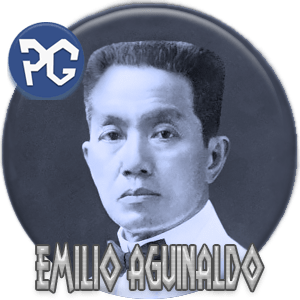Emilio Aguinaldo was the 7th child of Filipino-Chinese couple Carlos Jamir Aguinaldo and Trinidad Famy. He was born on the 22nd of March 1869 in Kawit Cavite (formerly Cavite el Viejo). He attended school at Colegio de San Juan de Letran but failed to finish due to the Cholera epidemic of 1882.
He married his first wife Hilaria Del Rosario in 1896 and had five children namely: (Miguel, Carmen, Emilio Jr., Maria, and Cristina). Hilaria died in 1921 and Emilio consequently married Dona Maria Agoncillo in 1930. Agoncillo was the niece of known Filipino diplomat Don Felipe Agoncillo and national hero Maria Maniño Agoncillo reknowned as "The Mother of the Filipino Flag".
He died on February 6, 1964 due to Coronary Thrombosis at the old age of 94.
Aguinaldo's descendants and relatives include political and prominent figures in history. These include Cesar Virata (Prime Minister 1981-1986), Ameurfina Melencio Herrera (SC Associate Justice 1979-1992), Joseph Emilio Abaya (Representative in the 13th and 14th Congress to 1st District of Cavite) and Reynaldo Aguinaldo (Cavite Mayor).
Parents:
• Father: Carlos Jamir Aguinaldo
• Mother: Trinidad Famy-Aguinaldo
Spouses:
• Doña Maria Agoncillo (1930-1963)
• Hilaria del Rosario (1896-1921)


